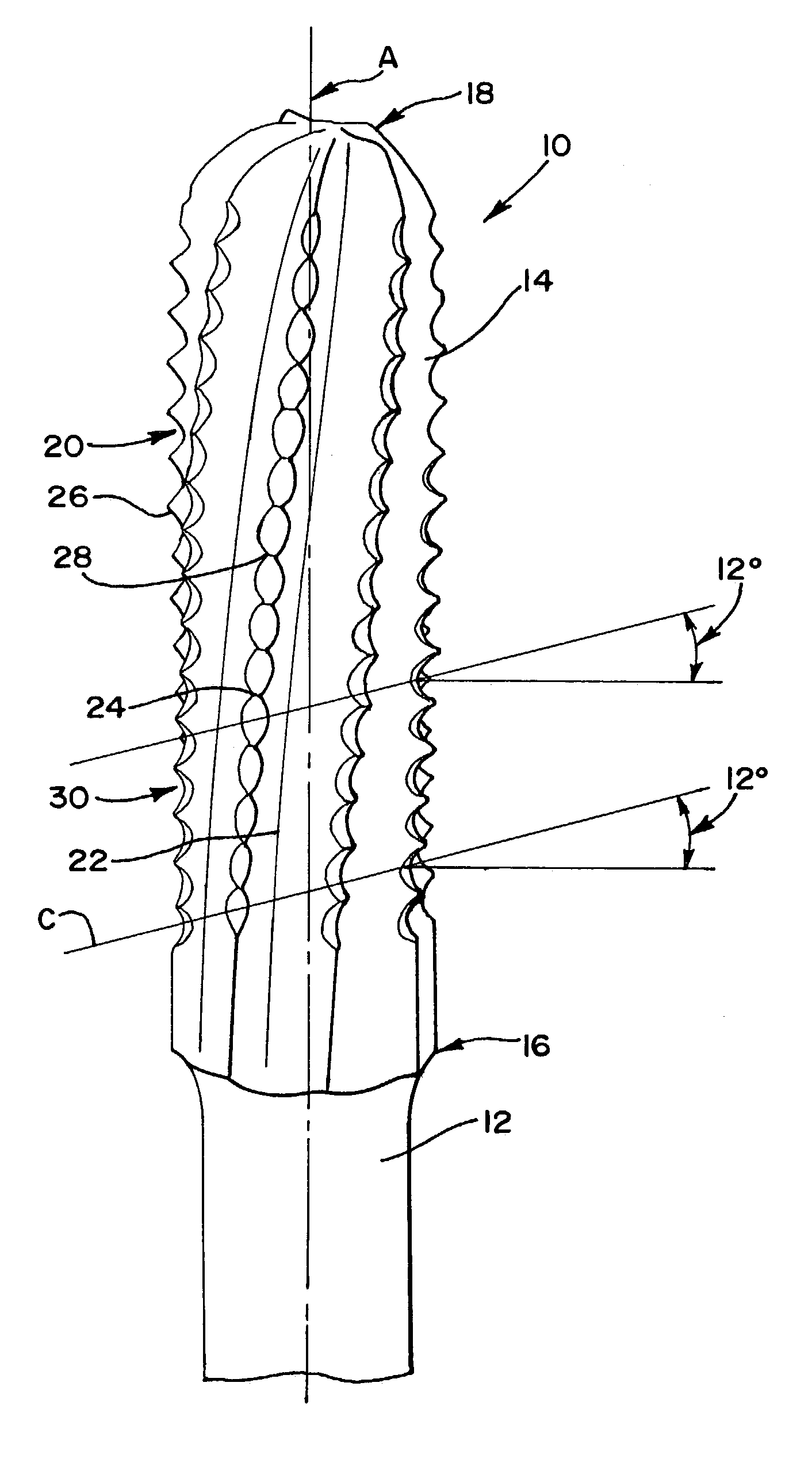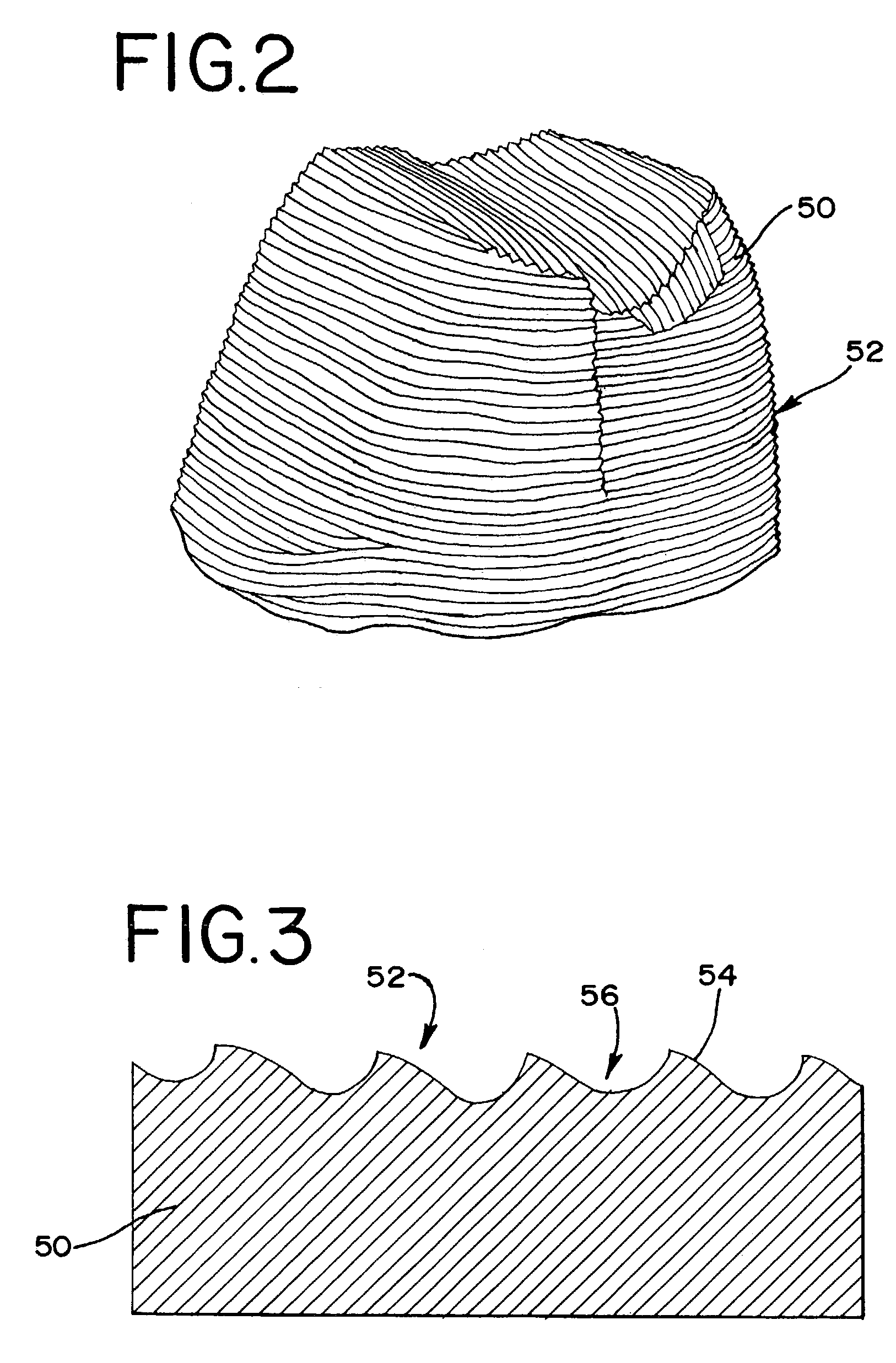Bur for preparing metal substrates
a metal substrate and brique technology, applied in the field of surface preparation and bonding techniques, can solve the problems of significant heat build-up, heat hazard to the fingers of the operator, and the procedure is typically quite time-consuming and somewhat hazardous, and achieves the effect of reducing the bulk of metal substrates, and reducing the weight of metal substrates with physical ease and control
- Summary
- Abstract
- Description
- Claims
- Application Information
AI Technical Summary
Benefits of technology
Problems solved by technology
Method used
Image
Examples
Embodiment Construction
[0032]FIG. 1 shows a fluted or bladed carbide bur 10 of the present invention. The bur 10 may be of a unitary construction, i.e., made of a single piece of tungsten carbide or the like. In the alternate, the bur may be made of separate elements; all made of tungsten carbide or any similar suitable material or made of different materials suitably connected. The bur 10 shown generally comprises a shank portion 12. The shank 12 may be made of any suitable material, such as stainless steel. At a distal or free end of the bur 10 a cutting head 14 is formed, which is commonly referred to as a bur head. The cutting head 14 is preferably comprised of a carbide material, for example, tungsten carbide or a material with similar properties, which may be formed into a cutting configuration. Other suitable cutting head materials include diamond and ceramic materials.
[0033]The cutting head 14 and shank 12 are coaxially aligned with a longitudinal axis A. The cutting head 14 extends outwardly from...
PUM
 Login to View More
Login to View More Abstract
Description
Claims
Application Information
 Login to View More
Login to View More - R&D
- Intellectual Property
- Life Sciences
- Materials
- Tech Scout
- Unparalleled Data Quality
- Higher Quality Content
- 60% Fewer Hallucinations
Browse by: Latest US Patents, China's latest patents, Technical Efficacy Thesaurus, Application Domain, Technology Topic, Popular Technical Reports.
© 2025 PatSnap. All rights reserved.Legal|Privacy policy|Modern Slavery Act Transparency Statement|Sitemap|About US| Contact US: help@patsnap.com



